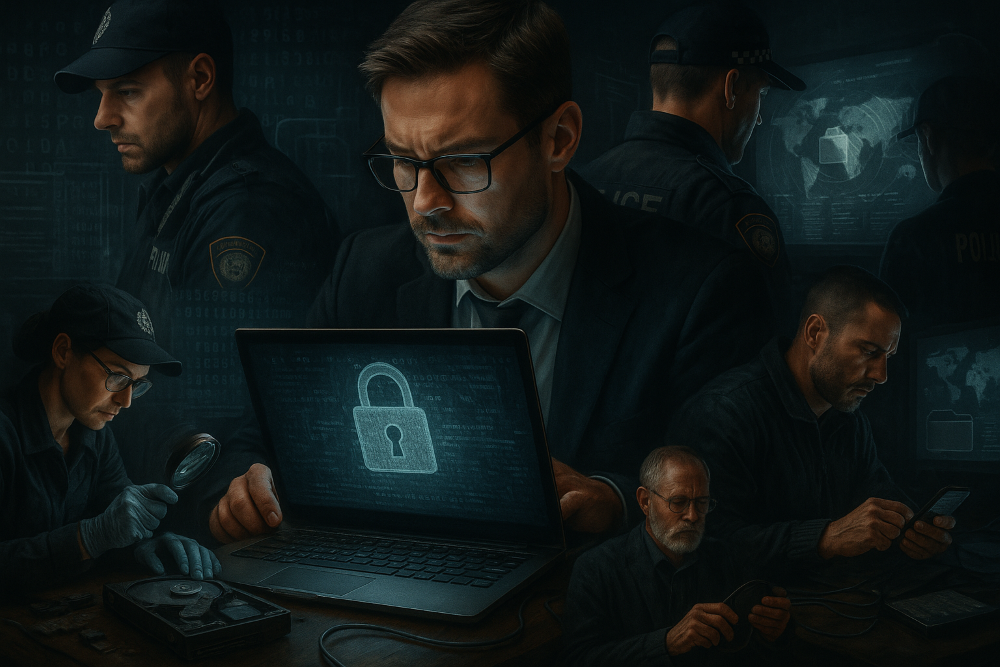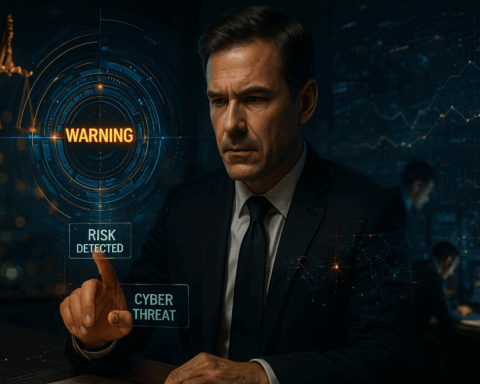In contemporary legal practice, digital investigation assumes a central role within criminal justice, particularly given the exponential growth of digital communication and the increasing use of online platforms for criminal activities. Digital data have increasingly become crucial evidentiary instruments in criminal cases, ranging from traditional offenses such as fraud and theft to complex forms of cybercrime that transcend national borders. The importance of a systematic and legally responsible approach to digital investigation cannot be overstated, as the admissibility of digital evidence often determines the legality of a conviction and the protection of fundamental rights of defendants. This complexity is further compounded by the necessity to combine technical expertise with legal precision when collecting, analyzing, and presenting digital information.
The legal frameworks for digital investigation lie at the intersection of criminal law, private law, international treaties, and technology. Specifically, within the context of criminal procedural investigations, the correct and proportionate use of digital forensic methods requires a profound understanding of both operational procedures and relevant legislation. Special attention must be paid to safeguards for the integrity, authenticity, and confidentiality of digital evidence, as even a single lapse in these safeguards can undermine the entire evidentiary process. Simultaneously, the deployment of emerging techniques, such as open-source intelligence (OSINT) and algorithmically assisted investigations, demands a careful balancing of effectiveness and the protection of fundamental rights, including privacy and freedom of communication. In this context, the tension between innovation in investigation and legal scrutiny becomes consistently apparent, necessitating a systematic, multidisciplinary approach.
Admissibility of Digital Evidence in Criminal Cases
Digital data, including emails, chat messages, log files, and metadata, are increasingly submitted as evidence in criminal proceedings. The admissibility of such evidence depends on strict legal criteria that evaluate both the origin and reliability of the information. Assessment focuses not only on the substantive content of the evidence but also on the process by which it was obtained, ensuring compliance with the law and safeguarding against violations of fundamental rights such as ne bis in idem or the right to a fair trial. Judicial scrutiny extends to the manner of collection, as any action that could compromise integrity potentially diminishes the evidentiary value.
The legal discourse surrounding digital evidence also examines the boundaries of traditional rules of evidence collection. Digital data can be easily manipulated, deleted, or fabricated, necessitating a rigorous chain of custody, digital signatures, and hash values to guarantee authenticity. Furthermore, multiple technical layers are often investigated, ranging from physical storage media to cloud-based infrastructures, each presenting unique legal and technical challenges. In practice, courts increasingly rely on expert reports and independent forensic analyses to form judgments on the reliability of digital evidence.
The context in which digital evidence is obtained also plays a critical role. Evidence gathered through misleading or unlawful methods, such as without proper authorization or via illegal system access, may be deemed inadmissible. This imposes a direct responsibility on investigative authorities to adhere to both procedural and technological standards that preserve the legality of the evidence. Complexity is further heightened when evidence originates from foreign systems or providers, requiring compliance with both domestic and international regulations.
Ensuring Data Integrity and Authenticity
Ensuring the integrity and authenticity of digital data is essential for its legal value. Integrity refers to the immutability of data from the moment of collection, while authenticity concerns the certainty that the data originate from the claimed source and have not been tampered with. In digital investigations, this is secured through technical measures such as cryptographic hashes, digital signatures, and meticulous documentation of the chain of custody. Every aspect of the evidence, including metadata and file history, can be decisive in judicial assessments of reliability.
Digital forensic practice necessitates precise procedures to minimize the risk of data corruption or loss. The use of write-blockers, controlled imaging of storage media, and logging of all access attempts are common measures to ensure that data remain in their original state. Additionally, all digital actions must be reproducible so that independent experts can verify and replicate the steps, thereby enhancing the legal scrutiny of the evidence.
Beyond technical safeguards, organizational and legal measures play a critical role. Digital evidence management systems must include strict access controls, authorization procedures, and regular audits to mitigate risks of internal manipulation or unauthorized access. The combination of technical, organizational, and legal safeguards creates a robust framework in which digital evidence can be considered reliable and authentic within a criminal justice context.
Use of OSINT and Digital Forensic Techniques
Open-source intelligence (OSINT) and digital forensic techniques constitute fundamental components of modern investigation. OSINT utilizes publicly accessible sources such as social media, forums, web archives, and public databases to gather information that may aid in resolving criminal cases. The strength of OSINT lies in its accessibility and speed, but strict adherence to legal and ethical frameworks is essential, particularly concerning privacy compliance, consent, and transparency in data processing methodologies.
Digital forensic techniques focus on in-depth analysis of digital devices, networks, and cloud environments to identify traces of criminal activity. These techniques include, among others, recovery of deleted files, log file analysis, network traffic inspection, and malware detection. Accuracy and reliability are paramount, as errors or methodological flaws can undermine the legal validity of the evidence.
Integrating OSINT with digital forensic methods allows for a holistic investigative approach, analyzing both public and internal digital traces in conjunction. Careful consideration is required to determine which data are evidentiary, which methods are legally permissible, and how third-party privacy is protected. Collaboration between these disciplines demands not only technical competence but also legal expertise to ensure that the information obtained can be lawfully used in criminal proceedings.
Cooperation Between Law Enforcement, Regulators, and Private Entities
Effective digital investigation necessitates close cooperation between law enforcement, regulatory authorities, and private entities such as internet service providers, cybersecurity firms, and cloud providers. Such collaboration is essential due to the technical complexity of modern digital infrastructures and the often cross-border nature of cybercrime. Law enforcement and regulators typically possess the legal authority to conduct investigations, while private parties provide critical technical information and operational support.
The legal frameworks governing such cooperation are stringent, determined by domestic legislation, international treaties, and sector-specific regulations. Contractual agreements, memoranda of understanding, and formal cooperation requests are standard instruments to ensure the legal validity of information sharing. Every collaboration must be meticulously documented and adhere to principles of proportionality, subsidiarity, and necessity, ensuring that the information obtained complies with applicable laws and regulations.
Additionally, cooperation between public and private actors presents challenges in confidentiality, liability, and data governance. Information provided by private entities must be verified and handled in a legally permissible manner to preserve the integrity of the criminal process. At the same time, such cooperation offers significant advantages, including access to specialized expertise, real-time monitoring of digital threats, and support for complex technical analyses, substantially enhancing investigative effectiveness.
Extraterritorial Powers in the Context of International Cybercrime
The fight against cybercrime frequently extends beyond national borders, making extraterritorial powers a crucial component of international investigations. When digital offenses affect multiple jurisdictions, a complex interplay emerges between domestic law, international treaties, and multilateral agreements. The application of extraterritorial authority demands a precise legal assessment in which the principle of territoriality is balanced against the necessity of effectively investigating and prosecuting cross-border criminal activity.
International cooperation is indispensable in this context. Requests for mutual legal assistance, cross-border transfer of data, or access to digital systems must comply with domestic legislation as well as relevant international instruments, including the Budapest Convention on Cybercrime. Every request for data exchange or digital access must be carefully substantiated and proportionate, with explicit consideration of potential infringements of fundamental rights such as privacy and personal data protection.
Moreover, the exercise of extraterritorial powers requires technological and organizational measures to ensure the legal validity of the evidence collected. Digital traces must be documented in a manner that preserves their integrity and authenticity, even when originating from foreign infrastructures. The absence of clear arrangements regarding data governance, chain of custody, or jurisdictional authority may render the evidence unusable in subsequent proceedings, underscoring the importance of standardized protocols and structured international cooperation.
Evidence Collection Through Cloud Providers and Data Location Challenges
The growing use of cloud infrastructures for the storage of digital information introduces new challenges for evidence collection. Cloud providers typically operate on a global scale and maintain servers located across multiple jurisdictions, complicating the determination of the applicable law and competent investigative authorities. For investigative bodies, this means that formal requests for data access must comply with domestic regulations as well as the contractual constraints and obligations of the cloud provider.
Data location and ownership rights are central considerations. The physical location of servers may determine the applicable legal regime, while access to data must align with international privacy standards and data protection frameworks. Legally flawed or insufficiently substantiated requests may result not only in the inadmissibility of evidence but also in reputational damage and potential liability for the investigative authorities involved.
Operational execution of cloud-based evidence collection likewise requires a detailed technical strategy. Imaging, logging, and verification of data integrity are essential steps to ensure that digital traces are properly documented and legally defensible. Particular consideration must be given to the rights of third parties who may share the same cloud environment, ensuring that confidential information and privacy interests are adequately safeguarded.
Encryption, Decryption Requests, and Fundamental Rights Considerations
Encryption provides essential protection for digital data but may simultaneously impede investigative and evidentiary efforts. When data are encrypted, competent authorities may need to request decryption or access to encryption keys. The legal framework governing such requests must carefully balance investigative needs against fundamental rights, including the right to privacy, confidential communication, and protection against unreasonable state intrusion.
Decryption requests must be precisely reasoned and proportionate. In practice, they are typically confined to situations where the evidence is indispensable for prosecuting serious offenses and where other investigative methods have proven inadequate. Refusal to comply with decryption requests may result in legal sanctions or procedural complications, whereas compelling access without sufficient safeguards may violate constitutional or international human rights standards.
The technical and organizational execution of decryption requests requires rigorous protocols to preserve data integrity and authenticity. This includes logging all access activities, cryptographic verification of original files, and secure management of temporary decryption sessions. At the same time, the rights of third parties must be strictly respected to prevent unauthorized access to confidential information or trade secrets.
Oversight of Algorithmic Investigations and Bias Prevention
The deployment of algorithmic systems in investigative processes and evidence collection offers substantial advantages in terms of efficiency and data processing capacity. However, the use of algorithms raises concerns regarding transparency, reproducibility, and the risk of bias. Algorithmic decision-making systems may contain unintended discriminatory patterns or systemic errors that undermine the legal validity of investigative outcomes and digital evidence.
Oversight of algorithmic investigative tools requires a combination of technical audits, legal assessments, and continuous evaluation of the models employed. Identifying biases and demonstrating the reliability of algorithms are essential to ensuring that results are legally admissible and do not disproportionately affect specific groups. Legal assessments focus on elements such as proportionality, purpose limitation, and accountability for the technologies used.
In addition, the implementation of algorithmic investigative methods must be accompanied by detailed documentation and training of involved personnel. Only with full traceability of inputs, processes, and outputs can decisions be guaranteed to be reproducible and verifiable. These safeguards constitute a fundamental prerequisite for the acceptance of algorithmically derived evidence in criminal proceedings and for ensuring the protection of the fundamental rights of suspects and third parties.
Retention Periods for Digital Evidence
Digital evidence is subject to specific retention periods determined by legal obligations, operational requirements, and the nature of the data involved. Insufficient or improper storage may result in loss of evidence, compromised integrity, or inadmissibility in court proceedings. Effective management of digital evidence therefore requires detailed protocols for storage, security, and periodic review of data relevance.
Legal frameworks — including criminal procedure law, privacy legislation, and sector-specific regulations — define maximum retention periods and the conditions under which data may be preserved. A balance must be struck between the need for effective evidence preservation and the protection of personal data, ensuring that retention does not lead to disproportionate intrusions on privacy or other fundamental rights.
Operationally, the retention of digital evidence includes multiple layers of security measures, such as physical safeguards, encryption, and controlled access. Clear procedures must also govern the deletion or archiving of evidence, including designated responsibilities and verification methods. These measures not only support the legal validity of the preserved evidence but also minimize risks of data breaches or manipulation throughout the retention period.
ole of Experts in the Assessment of Digital Evidence
The role of experts in the assessment of digital evidence is crucial for ensuring both the legal validity and the reliability of digital proof. Experts possess specialized knowledge in the fields of digital forensics, IT infrastructures, and cryptography, enabling them to provide an objective and technically substantiated interpretation of digital data. Their expertise is essential for analyzing complex digital traces, detecting manipulation or corruption, and verifying the chain of custody, all of which directly influence the admissibility and evidentiary weight of digital material in criminal proceedings.
Experts also serve as an essential bridge between technology and law. Their analyses and reports must not only be precise and reproducible, but also presented in a legally comprehensible manner, allowing judges and prosecutors to adequately assess the results. This requires systematic documentation of methodologies, tools used, investigative steps undertaken, and interpretations of findings. Only through such transparency can the objectivity of experts be ensured and the risk of disputes concerning technical assumptions or methodological shortcomings be minimized.
Beyond their technical and legal competencies, experts play a critical role in upholding ethical and procedural safeguards. They must operate in accordance with strict professional standards, independently of external interests, and adhere to principles of integrity, confidentiality, and proportionality. In practice, this means that experts not only guarantee the quality of their analyses but also oversee compliance with privacy regulations, the protection of confidential information, and the legal permissibility of the data obtained. In doing so, the expert becomes an indispensable safeguard for a fair and technically sound digital evidence process within criminal proceedings.















